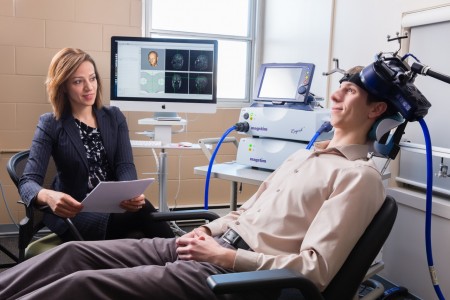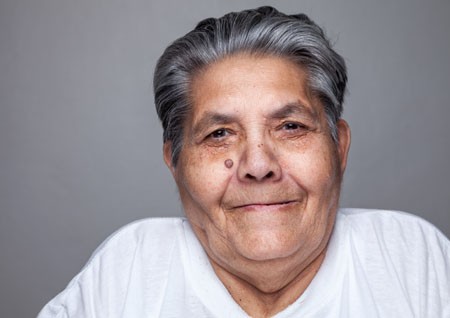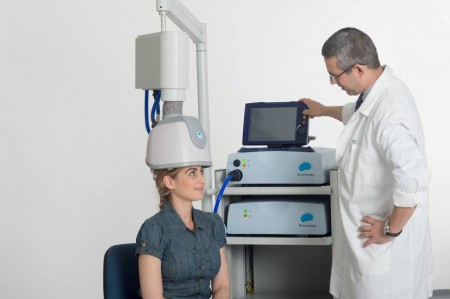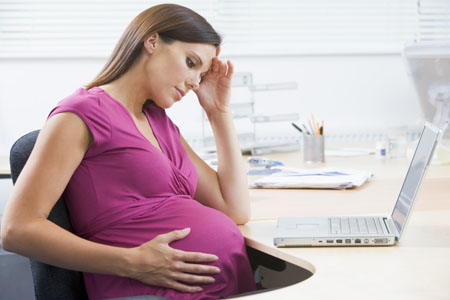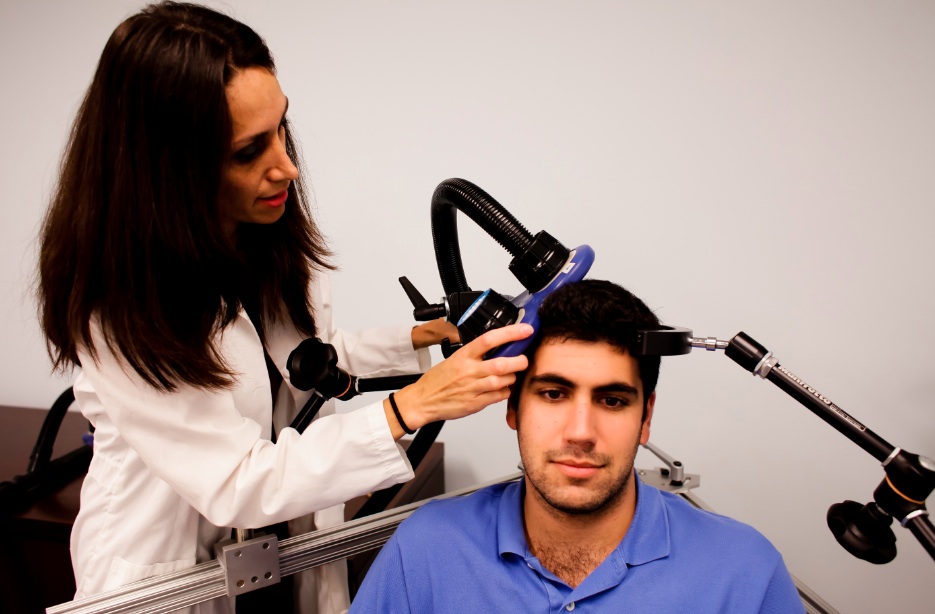US Lags Behind Canada in Access to RTMS
At the 2015 meeting of the Transcranial Magnetic Stimulation Society, Linda Carpenter, an American researcher who specializes in repeated transcranial magnetic stimulation (rTMS), a method of treating depression by using a magnetic coil placed near the scalp to stimulate neurons, compared notes with Jeff Daskalakis, a Canadian researcher who also studies rTMS.
Carpenter described the limited approval rTMS enjoys in the US. RTMS has been approved by the Federal Drug Administration for the treatment of unipolar depression under very limited parameters (only at a frequency of 10Hz). RTMS has limited availability in the US, and many healthcare companies do not cover it. Providers face scrutiny of study recruitment practices and recordkeeping by insurers and the Joint Commission (formerly the Joint Commission of Accreditation of Healthcare Organizations), which assesses healthcare quality.
In contrast, Daskalakis and his Canadian colleagues can and do use rTMS to treat a broader range of illnesses including bipolar disorder. In Canada rTMS is used to treat unipolar depression, schizophrenia, post-traumatic stress disorder (PTSD), and obsessive-compulsive disorder (OCD), and clinicians can adjust the parameters to treat adolescents and the elderly.
The situation in the US is unfair. Because rTMS has not been approved for the treatment of bipolar disorder, Carpenter and other clinicians in the US are unable to treat bipolar depression even though a wide range of experts and published studies report that rTMS is as effective (or possibly even more so) for patients with bipolar depression than for those with unipolar depression.
Few treatments are available for bipolar depression. The discrepancy is even sadder when one considers that there are already more than 20 FDA-approved antidepressants that can be used to treat unipolar depression, but only three approved medications for bipolar depression. Bipolar depression is an orphan illness, which lacks a powerful voice advocating for more treatment research about optimal therapeutic strategies. Read more
RTMS in the Elderly and After ECT
At the 2015 meeting of the Society of Biological Psychiatry in May, researcher Daniel Blumberger reported to this editor (Robert M. Post) that he has found repeated transcranial magnetic stimulation (rTMS) to be effective for depression in late life. Blumberger noted that it may be necessary to use higher intensity stimulation (i.e. at 120% of motor threshold instead of the usual 110% of motor threshold) in the elderly in order to overcome the gap between the skull and the brain, which can grow with age due to brain atrophy.
Blumberger has also successfully used rTMS as a followup treatment to a successful course of electroconvulsive therapy (ECT), administering rTMS twice a week for up to 66 treatments in a given patient in order to maintain remission of their depression.
Deep TMS May Reduce OCD Symptoms
Obsessive compulsive disorder (OCD) occurs in about 2% of the population worldwide. Selective serotonin reuptake inhibitor (SSRI) antidepressants are the most commonly used treatment for OCD, but not all patients respond adequately to them.
At the 2015 meeting of the Transcranial Magnetic Stimulation Society, researcher Joseph Zohar presented evidence that deep transcranial magnetic stimulation (deep TMS) targeted over the medial prefrontal cortex may reduce OCD symptoms. In TMS treatment, an electromagnetic coil is placed against the patient’s head and magnetic pulses that can penetrate the scalp are converted into small electrical currents that stimulate neurons in the brain. In Zohar’s study, patients with OCD were randomized to receive deep TMS at frequencies of either 20 Hz or 1 Hz, or a sham procedure. The 20 Hz deep TMS resulted in a 28% reduction in OCD symptoms compared to the other two groups, indicating that the 20 Hz treatment had a large effect size.
In addition to the deep TMS procedures, all patients also received cognitive behavioral therapy, high doses of SSRIs, and relapse prevention training.
Editor’s Note: It is interesting that 20 Hz deep TMS, which activates the prefrontal cortex, was more effective than 1 Hz, which decreases activity there. Other attempts to treat OCD have focused on suppressing frontal-striatal-thalamic circuits, which are overactive in the disorder. Since the medial prefrontal cortex is an important area for the new learning required for the extinction of anxiety symptoms in a variety of disorders, increasing activity in this medial prefrontal target area with 20 Hz may activate that extinction process allowing new learning rather than nonspecifically suppressing hyperactive frontal-striatal-thalamic circuits as 1 Hz TMS would do.
Studies of Medications and RTMS in Children Lacking
At the 2015 meeting of the Transcranial Magnetic Stimulation Society in May, researcher Stephanie Ameis discussed the dearth of medication studies in children, particularly for depression but also for schizophrenia and autism spectrum disorders, which share the symptom of impaired executive functioning, which can include skills such as planning and problem solving.
Ameis noted that in a literature review, there were a total of 1046 controlled pharmacological treatment studies in adults compared to only 106 in children, which reflects a relative absence of treatment knowledge, especially for depression (where there were 303 studies in adults versus only 17 in children) and bipolar disorder (where there were 174 studies of adults and 24 of children).
Ameis then reviewed the few studies of rTMS for depression in young people. She identified several series with only a total of 33 children and adolescents who had been treated with rTMS. She is beginning to study rTMS in patients with high-functioning autism (40 patients aged 16 to 25 have been randomized in her study). Ameis also described a 2013 study of rTMS in which patients with schizophrenia showed improved performance on a test of working memory published by Mera S. Barr and colleagues in the journal Biological Psychiatry. Ameis cited this as a rationale for studying rTMS’s effect on cognitive performance in people with autism.
RTMS Study Identifies Glutamate as a Biomarker for Depression Treatment
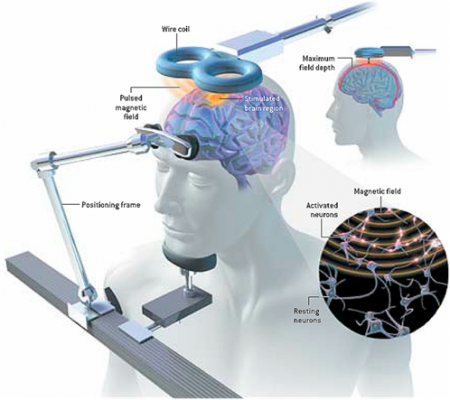 At the 3rd Annual Meeting of the Transcranial Magnetic Stimulation Society, Canadian researcher Frank MacMaster discussed his study of repeated transcranial magnetic stimulation (rTMS) in 50 children with depression. RTMS is a non-invasive procedure in which an electromagnetic coil is placed against the side of the forehead and magnetic pulses that can penetrate the scalp are converted into small electrical currents that stimulate neurons in the brain. The study was designed to identify biomarkers, or characteristics that might indicate which patients were likely to respond to the treatment. All of the patients received rTMS at a frequency of 10 Hz. Using magnetic resonance spectroscopy (MRS) technology, MacMaster found that children who responded well to rTMS treatment had low levels of the neurotransmitter glutamate at the beginning of the study, but their glutamate levels increased as their depression improved. Children who didn’t improve had higher glutamate levels at the beginning of the study, and these fell during the rTMS treatment.
At the 3rd Annual Meeting of the Transcranial Magnetic Stimulation Society, Canadian researcher Frank MacMaster discussed his study of repeated transcranial magnetic stimulation (rTMS) in 50 children with depression. RTMS is a non-invasive procedure in which an electromagnetic coil is placed against the side of the forehead and magnetic pulses that can penetrate the scalp are converted into small electrical currents that stimulate neurons in the brain. The study was designed to identify biomarkers, or characteristics that might indicate which patients were likely to respond to the treatment. All of the patients received rTMS at a frequency of 10 Hz. Using magnetic resonance spectroscopy (MRS) technology, MacMaster found that children who responded well to rTMS treatment had low levels of the neurotransmitter glutamate at the beginning of the study, but their glutamate levels increased as their depression improved. Children who didn’t improve had higher glutamate levels at the beginning of the study, and these fell during the rTMS treatment.
MacMaster hopes that glutamate levels and other biological indicators such as inflammation will eventually pinpoint which treatments are likely to work best for children with depression. At the meeting, MacMaster said that in Canada, only a quarter of the 1,200,000 children with depression receive appropriate treatment for it. Very little funding is devoted to research on children’s mental health, a serious deficit when one considers that most depression, anxiety, attention deficit hyperactivity disorder (ADHD), bipolar disorder, oppositional behavior, conduct disorder, and substance abuse begins in childhood and adolescence, and early onset of these illnesses has been repeatedly linked to poorer outcomes.
Editor’s Note: The strategy of identifying biomarkers is an important one. MacMaster noted that this type of research is possible due to the phenomenal improvements in brain imaging techniques that have occurred over the past several decades. These techniques include magnetic resonance imaging (MRI) to a resolution of 1 mm; functional MRI; diffusion tensor imaging (DTI), which can depict the connectivity of white matter tracts; and spectroscopy, which can be used to identify chemical markers of neuronal health and inhibitory and excitatory neurotransmitters, and analyze membrane integrity and metabolic changes. These methods provide exquisite views of the living brain, the most complicated structure in the universe. The biomarkers these techniques may identify will allow clinicians to predict how a patient will respond to a given treatment, to choose treatments more rapidly, and to treat patients more effectively.
RTMS and Other Treatments for Depression in Pregnancy
At the May meeting of the Society of Biological Psychiatry, researcher Deborah Kim gave a talk on the use of repeated transcranial magnetic stimulation (rTMS) for depression in women who are pregnant. In rTMS treatment, an electromagnetic coil is placed against the side of the forehead and magnetic pulses that can penetrate the scalp are converted into small electrical currents that stimulate neurons in the brain. Kim had recently completed an open study of rTMS in pregnant women, in which 70% of the women responded to rTMS. In another controlled randomized study of 30 women (also by Kim), 75% responded to active rTMS and 50% responded to a sham procedure. None of the women included had problems with the fetus or during delivery.
RTMS offers an alternative to women who are reluctant to take antidepressants during pregnancy. Kim cited data by Lee S. Cohen and colleagues in which women taking antidepressants show a 68% relapse rate if they stop taking these medications during pregnancy compared to a 26% relapse rate among those who continue taking antidepressants during pregnancy. Concerns about antidepressants’ potential effects on a fetus may have been overemphasized. Kim summarized the literature on antidepressants in pregnancy, concluding that there is a preponderance of evidence that antidepressants are safe for the mother and fetus, with few serious effects having been observed. Some researchers have been concerned about risks of persistent pulmonary hypertension or autism among offspring of women who took antidepressants during pregnancy, but studies have shown that the absolute risk of either is small. Stay tuned—on Wednesday we’ll discuss a new large and comprehensive study in which most SSRIs showed no link to birth defects, but fluoxetine and paroxetine were associated with risks of certain birth defects.
Editor’s Note: For mild depression during pregnancy, exercise and psychotherapy might be optimal, along with folate and vitamin D3. For moderate depression, omega-3 fatty acids might also be helpful, but it now appears that rTMS would be less risky than electroconvulsive therapy (ECT), which in the past has been a typical recommendation for pregnant women, but which exposes the fetus to the effects of anesthesia and seizure. In her summary Kim recommended that women with a pattern of recurrent depression continue antidepressant treatment, especially since a mother’s depression itself poses non-trivial risks to the fetus.
Personalizing Transcranial Magnetic Stimulation for Better Results
At the 3rd Annual Meeting of the Clinical TMS Society this past May, this editor (Robert M. Post) discussed remission rates for repeated transcranial magnetic stimulation (RTMS), which at 30% leave room for improvement. It may be possible to personalize treatment parameters to achieve better success in individual patients.
RTMS is a non-invasive procedure in which a magnetic coil placed near a patient’s head delivers electrical currents to their brain. High frequency stimulation (10Hz to 20Hz) increases brain activity as measured on PET scans, and low frequency stimulation (1Hz) decreases it, so it might be possible to choose the best frequency for an individual patient based on their baseline level of brain activity. If this is not possible, patients who fail to respond to one frequency might be switched over to the other frequency.
RTMS can be given during active positive cognitive behavioral therapy. Patients primed with positive thoughts and feelings may find that rTMS enhances these. (Some practitioners in the audience indicated that they already combine therapy and rTMS and have seen good results).
RTMS might enhance extinction learning, or the breaking of a habitual way of thinking, as it stimulates the media prefrontal cortex, a critical area for new learning. D-cycloserine, a partial glutamate agonist, has been shown to enhance extinction, and since rTMS releases glutamate and BDNF, it might also do the same.
It may also be possible to use rTMS in conjunction with medications (such as valproate) that affect epigenetic changes on the histones around which DNA is wrapped (because valproate is a histone de-acetylase inhibitor, preventing the removal of acetyl groups from the histones and allowing them to be transcribed more easily). Valproate enhances extinction learning in animals, so the stimulation of the medial prefrontal cortex and the increase in BDNF and glutamate that occur with rTMS may interact to potentiate this extinction learning.
One could also envision using rTMS to enhance learning during the memory re-consolidation window that opens 5 minutes to an hour after a person actively recalls old memories, and which can lead to more permanent memory alterations in anxiety disorders, post-traumatic stress disorder (PTSD), and substance abuse.
Since patients are awake and able to talk during rTMS, making use of evoked thoughts and memories specifically for a given patient may lead to enhanced clinical effects, because these neural pathways are more selective activated and potentiated, leading to what is called experience-dependent neuroplasticity.
RTMS Can Increase Amygdala Connectivity
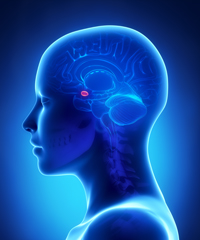 Regulation of the amygdala (the brain’s emotional center), particularly through its interaction with the ventral anterior cingulate cortex, has been implicated in the experience of fear in animals, and anxiety and depression in humans. Connectivity between the two structures is critical for emotion modulation. Repeated transcranial magnetic stimulation (rTMS) is a method of stimulating outer regions of the brain with magnets. Researchers Desmond Oathes and Amit Etkin are investigating whether rTMS can also be used to influence these deeper brain areas, or their interaction with each other.
Regulation of the amygdala (the brain’s emotional center), particularly through its interaction with the ventral anterior cingulate cortex, has been implicated in the experience of fear in animals, and anxiety and depression in humans. Connectivity between the two structures is critical for emotion modulation. Repeated transcranial magnetic stimulation (rTMS) is a method of stimulating outer regions of the brain with magnets. Researchers Desmond Oathes and Amit Etkin are investigating whether rTMS can also be used to influence these deeper brain areas, or their interaction with each other.
The researchers’ study used single-pulse probe TMS delivered at a rate of 0.4 Hz at 120% of each participant’s motor threshold, targeted at the anterior or posterior medial frontal gyrus on either side of the brain. The researchers also used functional magnetic resonance imaging (fMRI) of the whole brain to observe connectivity between different sections.
RTMS to the right side of the medial frontal gyrus increased connectivity between the amygdala and the ventral anterior cingulate cortex more than stimulation to the left side. Stimulation of the posterior portion of the medial frontal gyrus increased connectivity more than stimulation of the anterior portion.
Editor’s Note: These data indicate that rTMS can alter brain activity in these deeper regions and can influence inter-regional connectivity. This is important because abnormalities in the connectivity of brain regions have increasingly been found in patients with mood disorders. Oathes and Etkin hope that these findings can be applied to others and that rTMS can be used to correct patterns of regional connectivity in the brain in order to improve emotion regulation.
Theta-burst RTMS Improved Depression
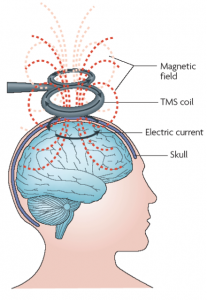 Theta-burst stimulation is a type of repeated transcranial magnetic stimulation (rTMS) currently being investigated for the treatment of severe depression. In rTMS a magnetic pulse applied to the scalp causes neurons to fire. A recent study of 60 patients by Cheng-Ta Li et al. published in the journal Brain compared continuous, intermittent, and combined theta-burst treatment with a sham treatment. While all four groups of patients with treatment-resistant depression improved, indicating some placebo effect, patients in the group who received intermittent stimulation over the left prefrontal cortex and those who received a combination of intermittent left prefrontal cortex stimulation and continuous right prefrontal stimulation showed the greatest improvement in their depression. Those patients with greater prior treatment resistance responded less well across all of the treatments.
Theta-burst stimulation is a type of repeated transcranial magnetic stimulation (rTMS) currently being investigated for the treatment of severe depression. In rTMS a magnetic pulse applied to the scalp causes neurons to fire. A recent study of 60 patients by Cheng-Ta Li et al. published in the journal Brain compared continuous, intermittent, and combined theta-burst treatment with a sham treatment. While all four groups of patients with treatment-resistant depression improved, indicating some placebo effect, patients in the group who received intermittent stimulation over the left prefrontal cortex and those who received a combination of intermittent left prefrontal cortex stimulation and continuous right prefrontal stimulation showed the greatest improvement in their depression. Those patients with greater prior treatment resistance responded less well across all of the treatments.
Editor’s Note: Studies continue to explore the optimum parameters for rTMS, but large studies and meta-analyses continue to show that the treatment has positive effects in depression.
Transcranial Magnetic Stimulation Continues To Show Effectiveness In Depression
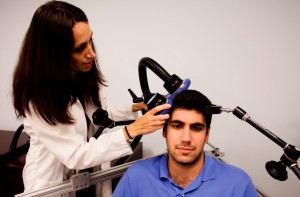 At the 2014 meeting of the Society of Biological Psychiatry, David G. Brock et al. reported that 41 of 67 depressed patients achieved remission (61.2%) after acute treatment with Transcranial Magnetic Stimulation without other medication. After three months of continuation treatment in which patients either received one maintenance TMS session per month or were simply observed, 10 of the 16 receiving active TMS continuation (62.5%) did not relapse, while 7 of the 16 who were only observed (43.8%) did not relapse. While this was not a statistically significant difference, it suggests that continuation TMS should be studied further.
At the 2014 meeting of the Society of Biological Psychiatry, David G. Brock et al. reported that 41 of 67 depressed patients achieved remission (61.2%) after acute treatment with Transcranial Magnetic Stimulation without other medication. After three months of continuation treatment in which patients either received one maintenance TMS session per month or were simply observed, 10 of the 16 receiving active TMS continuation (62.5%) did not relapse, while 7 of the 16 who were only observed (43.8%) did not relapse. While this was not a statistically significant difference, it suggests that continuation TMS should be studied further.
Andrew Leuchter et al. reported that synchronized transcranial magnetic stimulation (sTMS) at a patient’s individual alpha frequency (IAF) was more effective than sham treatment in those with prior treatment resistance (34.2% vs 8.3%) but not different from sham treatment in depressed patients who had never received treatment.
Editor’s Note: This would be important if replicated, as patients with high levels of treatment resistance do not tend to respond well to regular rTMS given at 10Hz and not matched to a patient’s alpha frequency.
RTMS Reduced Smoking
Dinur-Klein Limor reported that 10 Hz (but not 1 Hz) repetitive transcranial magnetic stimulation (rTMS) over the left pre-frontal cortex decreased cigarette consumption when given in combination with a smoking cue.

